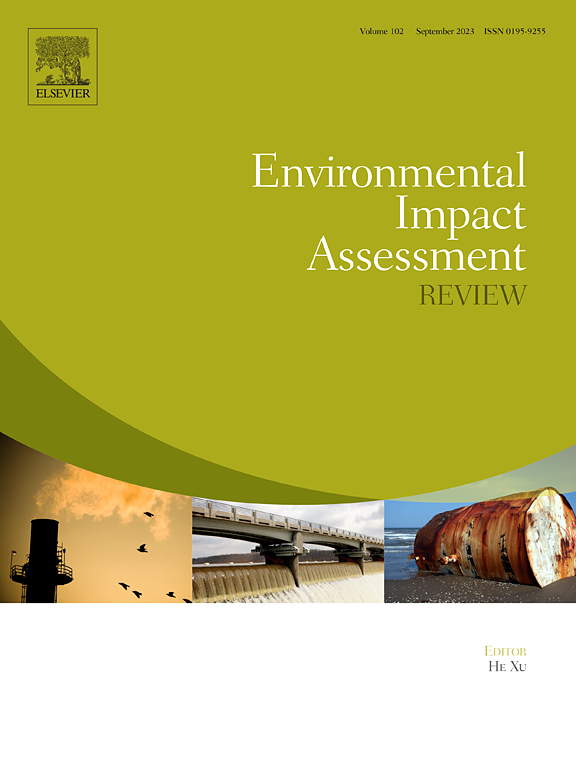The multiple empowerment effects of digital transformation on carbon emissions in manufacturing industry from the prospective of factor allocation: Theoretical analysis and empirical evidence
IF 9.8
1区 社会学
Q1 ENVIRONMENTAL STUDIES
引用次数: 0
Abstract
To enhance the value of data as a production factor in economic activities and encourage the mutually beneficial integration of digitalization and environmental sustainability in the manufacturing industry, a factor input intensity model empowered by data factor is constructed to quantitatively identify the multiple empowerment effects of digital transformation on carbon emissions in manufacturing, mainly including substitution and allocation innovation effects, and rebound effect. Empirical tests are also conducted using data from Chinese manufacturing between 2010 and 2019. It can be seen that the carbon reduction effect is determined by both substitution and allocation innovation effects. When the input intensity of the data factor increases to a certain threshold, there is a range of effective carbon reduction within which the rebound effect can be counteracted by the carbon reduction effect. As a result, the primary carbon reduction effect will gradually shift from the allocation innovation effect to the substitution innovation effect. Additionally, there is an inverted “U-shaped” nonlinear relationship between the data factor input intensity, innovation effects, and the carbon emission intensity of manufacturing. Moreover, in contrast to the same and significant inverted U-shaped relationship between data factor input intensity and the substitution innovation effect of energy factor across all types of sub-sector groups, there is significant heterogeneity in the result and direction of interaction relationships between data factor input intensity and the rest of the multiple empowerment effects.
从要素配置视角看数字化转型对制造业碳排放的多重赋权效应:理论分析与经验证据
为提升数据作为生产要素在经济活动中的价值,促进制造业数字化与环境可持续发展的互利融合,本文构建了数据要素赋能的要素投入强度模型,定量识别数字化转型对制造业碳排放的多重赋能效应,主要包括替代效应、配置创新效应和反弹效应。并利用 2010 年至 2019 年的中国制造业数据进行了实证检验。可以看出,碳减排效应是由替代效应和配置创新效应共同决定的。当数据因素的投入强度增加到一定临界值时,存在一个有效减碳范围,在此范围内,反弹效应可以被减碳效应抵消。因此,主要的碳减排效应将逐渐从分配创新效应转向替代创新效应。此外,数据要素投入强度、创新效应和制造业碳排放强度之间存在倒 "U "型的非线性关系。此外,数据要素投入强度与能源要素替代创新效应之间的倒 "U "型关系在所有类型的子行业组中都是相同且显著的,相比之下,数据要素投入强度与其他多重赋权效应之间的交互关系的结果和方向则存在显著的异质性。
本文章由计算机程序翻译,如有差异,请以英文原文为准。
求助全文
约1分钟内获得全文
求助全文
来源期刊

Environmental Impact Assessment Review
ENVIRONMENTAL STUDIES-
CiteScore
12.60
自引率
10.10%
发文量
200
审稿时长
33 days
期刊介绍:
Environmental Impact Assessment Review is an interdisciplinary journal that serves a global audience of practitioners, policymakers, and academics involved in assessing the environmental impact of policies, projects, processes, and products. The journal focuses on innovative theory and practice in environmental impact assessment (EIA). Papers are expected to present innovative ideas, be topical, and coherent. The journal emphasizes concepts, methods, techniques, approaches, and systems related to EIA theory and practice.
 求助内容:
求助内容: 应助结果提醒方式:
应助结果提醒方式:


